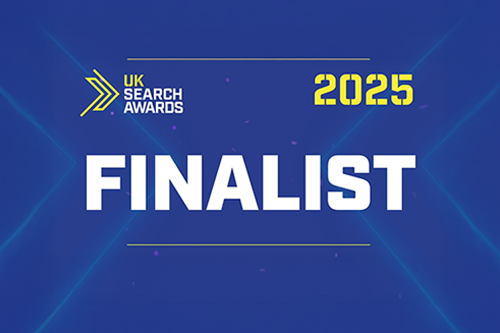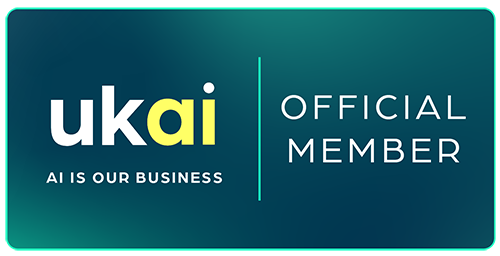For those who’ve led marketing through the rise of the web, the explosion of social media, and the data arms race of the 2010s, it may feel like we’ve only just figured things out.
But the game is changing, again. And this time, the transformation will be faster, more profound, and less forgiving to laggards.
The 5 Distinct Eras of Marketing
To understand the urgency of what’s happening today, it helps to zoom out and see where we’ve come from. I can remember learning about the evolution of marketing as a concept or an orientation back in the 1980s.
Businesses could be described to have been ‘product oriented’, ‘production oriented’ but the true path to success was always to begin with the customer need and be ‘marketing oriented’.
1. The Production Era (1800s–1920s)
“If you build it, they will come.”
This was the age of the assembly line. Mass production created access, not abundance. Marketing’s job was minimal—products often sold themselves. Brands didn’t exist as we know them today. Efficiency and distribution reigned supreme.
2. The Sales Era (1920s–1950s)
“Sell what you make.”
As markets matured, competition increased. The response? Aggressive sales tactics. Think door-to-door salesmen, catchy jingles, and the birth of Madison Avenue. Marketing was about persuasion—creating demand where there was none.
3. The Customer-Centric Era (1950s–2000s)
“Find a need and serve it.”
A major philosophical pivot: marketers realized long-term success meant understanding customers deeply. This era spans both the traditional “Marketing Era” and the “Relationship Marketing Era.” Tools like market research, segmentation, and CRM took centre stage. Loyalty became a metric, not just a hope.
4. The Digital Marketing Era (2000s–2022)
“Be where your customer is, digitally.”
With the rise of the internet, mobile, and social platforms, marketing became a 24/7 operation. The marketer’s toolkit exploded: SEO, SEM, programmatic, email, social, influencer strategy, and real-time analytics. We entered the age of the funnel, the dashboard, and the algorithm.
But despite the new tools, the thinking often remained old: linear campaigns, reactive strategies, siloed content.
Then, in late 2022, the rules changed.
5. The AI-Driven Marketing Era (2022–Present)
“Predict. Personalise. Automate. Learn.”
The public release of tools like ChatGPT, Claude, and Midjourney marked the start of a new age. AI became the classic ‘overnight success’ that was decades in the making. Remember that Google shifted it’s mantra from ‘Mobile First’ to ‘AI first’ in 2016 six years before anyone had heard of Chat GPT.
The new tools at our disposal aren’t just new channels or tactics, they’re paradigm-shifting technologies. And they’re redefining what marketing is.
We’re entering the 5th Era: AI-Driven Marketing.
This new era demands a complete rethinking of marketing’s purpose, process, and structure. It’s not just about doing what we’ve always done, but faster or cheaper. It’s about doing entirely new things.
Let’s break this down.
What Makes the AI Era Fundamentally Different?
This isn’t just another channel or tool. AI changes how marketing works at the core. It changes the role of the marketer, the structure of teams, and the speed of execution.
Here’s what sets this era apart.
1. Marketing is Becoming Predictive
Previously, we analyzed what already happened. Now, with AI, we’re starting to predict what will happen. Predictive models can forecast customer churn, identify high-value segments before they convert, and generate content tailored to individual preferences, before the customer even expresses a need.
If your team is still focused only on past-data dashboards, you’re already behind.
2. Personalisation is Scaling - Exponentially
We’re no longer stuck with “personalised” subject lines or product recommendations. AI enables hyper-personalisation: unique experiences at the individual level, dynamically generated in real time. Imagine a landing page that rewrites itself depending on the user’s sentiment, behaviour, or even mood.
Static campaigns won’t survive this shift.
3. Creative is No Longer a Bottleneck
AI removes one of marketing’s oldest constraints: the cost and time of creation. Text, images, video, even code can now be generated at scale. This doesn’t replace creative talent—it amplifies it. The creative director of the future won’t just craft campaigns—they’ll design the rules that let AI generate thousands of them.
Your creative process needs a reboot.
4. Marketing Strategy Itself is Changing
Previously, marketing strategy meant targeting the right segment with the right message through the right channel. In the AI era, that framework is obsolete. Strategy must now include:
- Training AI systems on your brand voice
- Designing ethical guardrails for machine-generated content
- Creating intelligent customer journeys that adapt in real time
- Managing AI-human collaboration across your team
This isn’t just about tools. It’s about mindset.
The "Aha" Moment CMOs Must Grasp
Here’s the truth: most marketing organisations are structured for the digital era, not the AI one.
- Your org chart is built for channel execution, not intelligent orchestration.
- Your content pipeline assumes linear campaigns, not generative content loops.
- Your MarTech stack optimises for reporting, not learning.
This is your "aha" moment: AI isn’t just another tactic, it’s a new foundation.
If you try to bolt AI onto your current processes, you’ll miss its power. This is the same mistake brands made in the early 2000s when they treated websites like digital brochures. Today, the mistake is treating AI as a fancy copywriter or chatbot.
What CMOs Should Do Now
You don’t need to have all the answers. But you do need a new playbook.
Here’s where to start:
1. Audit Your AI Readiness
- Do you have a centralised understanding of how AI is being used across your marketing teams?
- Have you mapped out where generative AI could create leverage?
- Are your legal and data teams aligned on ethical guardrails?
2. Create an AI Innovation Pod
Small, cross-functional teams can test AI tools in real use cases—from content generation to predictive analytics. Treat it like a product lab, not a tech demo.
3. Re-skill Your Team
Writers must learn to prompt. Designers must learn to guide generative models. Analysts must learn to work with predictive systems. This isn’t optional. Upskilling is the moat.
4. Challenge Legacy KPIs
Clicks, impressions, and open rates still matter—but they won’t capture the value of adaptive, AI-powered experiences. Develop new metrics: speed to deploy, content iteration cycles, model training time, real-time relevance.
5. Rethink Marketing’s Role
As marketing becomes more predictive and generative, its function evolves. You’re no longer just driving awareness or leads—you’re designing systems of intelligence that can scale personalised value.
The Future Belongs to the Brave
When digital marketing emerged, it was easy to dismiss. "It’s just websites." Then it became websites, email, social, search, e-commerce, and now… everything.
AI will follow a similar path, but faster. If you’re a CMO, your job is no longer to adopt AI. Your job is to lead your company through it.
Because in the 5th era of marketing, the winners won’t just be those who use AI, they’ll be those who rethink marketing itself.











































